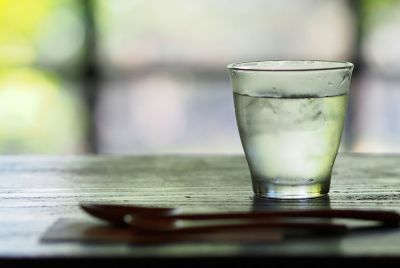Lloyds shrinks loss in 2009, bad debts soar
Lloyds
The bailed-out bank was one of the first to call a peak in bad debts during 2009 and it says it sees further improvements this year, with impairments reducing at the rate it saw between the first and second half of 2009, when they fell 21 percent.
That trend would imply bad debts will drop to about 15 billion pounds this year, despite uncertainty over Ireland, where losses mounted and one third of loans are now impaired.
The bank's cautious optimism on the broader UK economy and on its own, closely watched retail margins, was not enough to lift it shares, which ticked lower in early trade.
The loan-to-deposit ratio is way too high and the impairment guidance isn't perhaps as bullish as some people had expected, so there is some disappointment out there, analyst Simon Maughan at MF Global said.
Loans as a ratio to deposits dipped to 169 percent from 177 percent, but remains high by industry standard and shows its reliance on wholesale funding.
It expects that to fall to 140 percent over the next few years. HSBC's
Ireland is a classic example of everything that was wrong with HBOS -- late cycle entry into over-cooked property market, where you didn't know the customers, your underwriting standards were poor and you're paying a very heavy price, Maughan said.
Lloyds, 41 percent state-owned after it was bailed out by the UK government, posted a loss of 6.3 billion pounds, hit by the 60 percent increase in impairments. That compares to a 6.7 billion loss in 2008 and a consensus loss estimate of 7.1 billion, according to Thomson Reuters I/B/E/S/.
Excluding a 6.1 billion pounds gain on its own debt, the loss was 12.4 billion. On a statutory level -- which includes an 11.2 billion goodwill gain on HBOS -- the group made a pretax profit of just over 1 billion pounds.
MARGIN IMPROVEMENTS AHEAD
Lloyds, which completed the deal to take over rival HBOS in January last year, said it saw a slow recovery for the UK economy in 2010, with house prices expected to be broadly flat and its own retail banking margins improving in 2010 and beyond.
It targets 2 percent this year as pricing increases begin to feed through. Margins stood at 1.8 percent in the second half of 2009, an improvement on 1.7 percent in the first six months.
The comments echoed a cautiously positive outlook from peer Royal Bank of Scotland
Analysts said impairments and capital ratios were ahead of their expectations but cautioned other elements, including Lloyds' efforts to shrink risk-weighted assets, were less positive.
The capital ratios are in line with expectations, but the claim that management is restructuring the balance in the correct way is not being shown with these results -- in fact, the opposite is shown to be the case, said Andrew Lim, analyst at Matrix.
UBS analysts said guidance that margins will improve should see income generation well ahead of market expectations.
Shares in Lloyds, which have climbed almost 20 percent in the past two weeks, were down 2.2 percent at 53.80 pence at 0958 GMT. That is well below the 74p average level at which the government bought its stake in the bank, taking account of Lloyds's bumper rights issue last year.
It said it achieved cost savings of 534 million pounds from the HBOS deal during the year and raised its target for annual synergies expected from the deal to 2 billion a year by 2011. The bank cut over 13,000 jobs last year, ending with 107,000.
Lloyds is being forced to sell hundreds of branches to satisfy EU regulators and compensate for state aid, but CEO Eric Daniels said his priority was improving its balance sheet and completing the HBOS integration.
You can't do everything at once, he told Reuters.
The bank declined to comment on bonus payments, after it said earlier this week that Daniels would waive his own bonus. Its bonus pool is expected to be about 200 million pounds, a fraction of peers such as Barclays, which have investment banking arms. Lloyds said payment for a bonus tax imposed by Britain would not be significant.
($1=.6521 pounds)
(Editing by Mike Nesbit)
© Copyright Thomson Reuters 2024. All rights reserved.





















